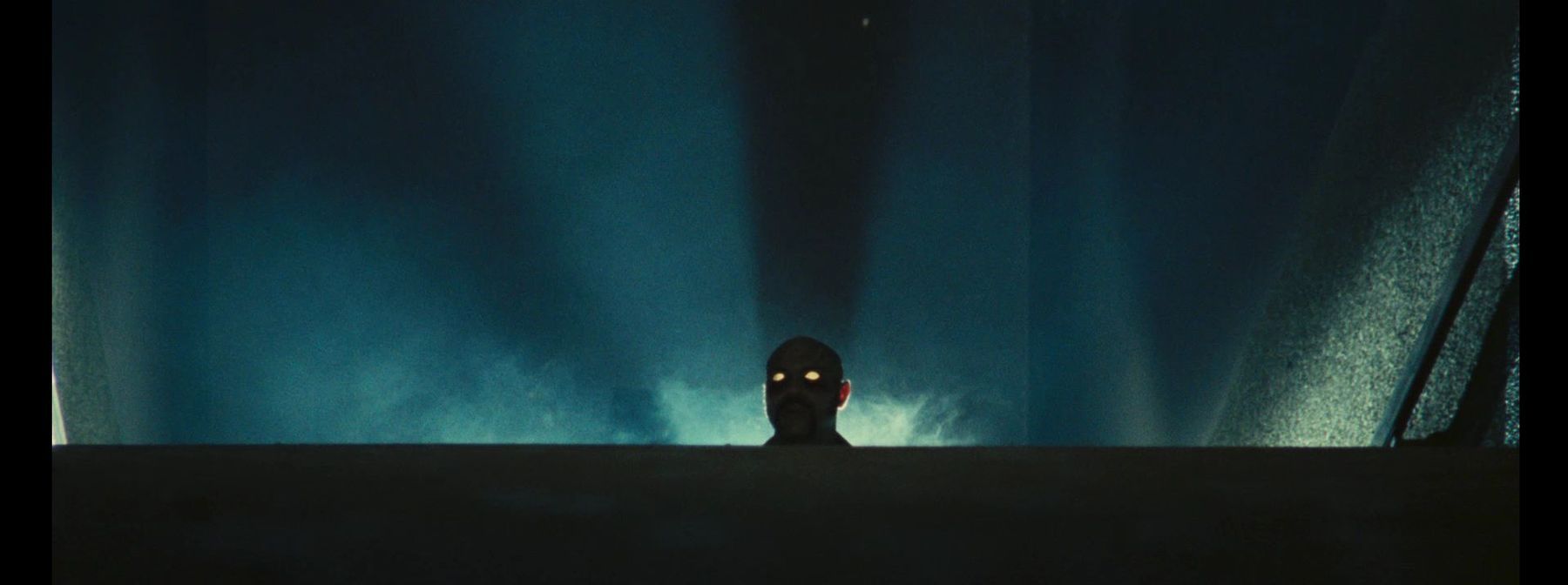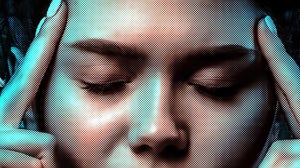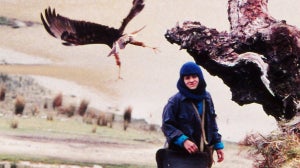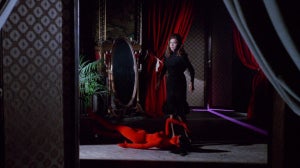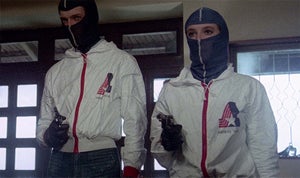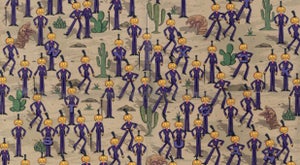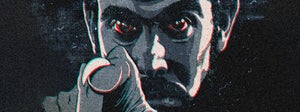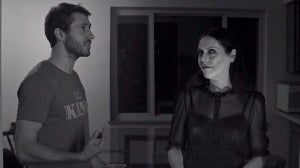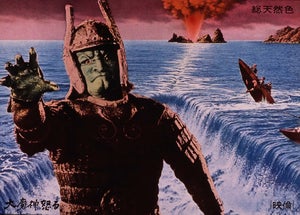
Despite the continued popularity of Lamberto Bava's Demons movies, over thirty years after they were first produced, the pair of films nevertheless represent something of a full stop in his directing career. Although Bava continued to work steadily throughout the subsequent decades, nothing he made after the first Demons sequel ever proved as impactful as those films, or the best of his work prior to them. And while the director certainly cannot be held responsible for the decline in Italian film production that ultimately forced him, and many of his peers, into directing for television, it's hard not to wonder why his earlier credits are so much more interesting than most of what followed.
Representing the third successive generation of the Bava family to work in cinema, Lamberto got his start in the business via the patronage of his legendary father Mario, working as an assistant director on several of his greatest films. Father and son worked together in that capacity for over a decade, until the troubled productions of both Rabid Dogs and Lisa and the Devil/House of Exorcism resulted in Mario being unemployed for some two years. Determined to help his father work again, Lamberto took over the development of a Dardano Sacchetti (the original writer on Mario's A Bay of Blood) screenplay, refashioning the script into a brand new project for his father: Shock.
Despite Lamberto's later assertion that “I don't think it's one of my father's best films”[1], Shock nevertheless contains several moments of Mario Bava's signature visual artistry, plus what is perhaps Daria Nicolodi's finest performance, and provided the ageing director with an opportunity to finish his cinema career on a high note. However, what is undeniable is that the finished film is not entirely Mario's work. During shooting, he was apparently given to leaving the set early and handing the directorial reins over to Lamberto, and although Mario claimed this was down to his increasing ill-health, the suspicion was that he wanted to give his son a chance to assume the role of director, much as he himself had done on Ricardo Freda's I vampiri twenty years before. Lamberto has estimated that about 25% of Shock is his, although it is unclear exactly who directed what. (For instance, he now claims sole credit for one of the most effective visual tricks in the film, the moment where a young boy suddenly transforms into the ghost of his father, whereas according to his friend Michele Soavi, “[Lamberto] was just following his father's storyboard.”[2])
Regardless, the production went smoothly enough that father and son repeated the experiment on what would prove to be Mario's final credit as director, La Venere d'Ille, an episode of the TV mini-series I giochi del diavolo. Once again dividing the directorial duties between themselves, they crafted a small gem of the supernatural. Somewhat difficult to see, La Venere d'Ille is reminiscent of the stripped-down subtlety of the BBC's best televisual ghost stories, and is well worth the effort of seeking out. However, save for the climactic set-piece, the film is considerably less baroque than much of Mario's other work, and as such perhaps points the way towards Lamberto's subsequent solo debut as director, Macabre.
The inspiration for the project came about when Pupi Avati (director of the seminal giallo The House with Laughing Windows) read of a bizarre real-life case where a woman had kept the severed head of her dead lover in her refrigerator, and decided to use it as the seed for a psychological horror film. Not wishing to direct it himself, Avati approached Lamberto Bava instead. Given the similarities in subject matter to Shock (both films detail the gradual mental breakdown of their female protagonist), he was a natural fit for the material, and the two works make for an illuminating and complimentary double-bill. Shock is unabashedly supernatural and filled with the sort of painterly touches that would now be defined as Bava-esque, whereas Macabre is far more grounded in reality (despite an ill-advised climactic scare that tips the film into the realm of the uncanny). This is not to place one approach above the other; both films are extremely effective. It's merely interesting to consider whether Macabre suggests the sort of career Lamberto could have had. Is its subtle naturalism (and that of La Venere d'Ille) an indication of the sort of directorial approach he might have preferred to adopt on future projects? Or was the morbidly downbeat atmosphere of the film (a quality it certainly shares with The House with Laughing Windows) a result of producer/co-screenwriter Avati's influence?
Because, as striking as they are, the main problem that arises in examining Lamberto Bava's early credits is distinguishing where the creative input of his collaborators ends and his own begins. A problem which only becomes more pronounced once he begins his partnership with Dario Argento, the man who replaced Mario Bava as the pre-eminent figure in Italian genre cinema.
Macabre was only a middling box-office success in Italy, and so Bava carried on working as an assistant director for a time. He began his association with Argento in that capacity on 1980's Inferno, and continued in the position when Argento went on to make Tenebrae in 1982. Shortly afterwards, Bava would finally be given the chance to direct again, helming another Dardano Sacchetti script, A Blade in the Dark. The project began life as a giallo TV series before its graphic violence led to it being recut as a theatrical feature, and although Argento himself was not involved in the film, its violently stylised murder set-pieces, fetishistic close-ups, and chilly, modernist production design highlight the obvious influence of Tenebrae upon Bava's method here. Unfortunately, the script's tin-eared dialogue is also reminiscent of Argento at his worst (“Is it possible you're such a vacant nerd that your satisfaction is to sit like a frog in the sun?”) and the cast of talking haircuts make one long for the actual acting performances of Bernice Stegers in Macabre and Nicolodi in Shock. Bava utilises the claustrophobic confines of the main villa location well, and his Argento imitations are proficiently done, but in retrospect, A Blade in the Dark could have been the first sign that, without a genuinely creative collaborator such as his father or Avati onboard, Bava might struggle to impose an identifiable personality on his material.
Indeed, the director's next two projects were such rote journeyman assignments (Blastfighter and Devouring Waves, both 1984) that he took a pseudonymous directing credit on both, John Old, Jr (in tribute to Mario's own anglicised pseudonym). It wasn't until he reteamed with Argento for 1985's Demons that he managed to regain some of the flair that had marked out Macabre as such a noteworthy debut. This time around, Bava would be director while Argento served as his co-writer/producer; about as creative (and wilful) a collaborator as anyone could wish for. Indeed, Bava subsequently went on the record to grouse that “[Argento]'s not always an honest person in the sense that not everyone gets due credit on the films he produces.”[3]
Credit battles aside, Demons undeniably bears Argento's influence, fusing the undead mayhem of George A. Romero's Dawn of the Dead (which Argento had co-produced) with the day-glo supernatural incoherence of Suspiria and Inferno. And although the script is credited to four people (not only Argento and Bava, but also Sacchetti and frequent Argento collaborator Franco Ferrini), it demonstrates little of the tight grasp of narrative displayed in both Argento and Bava's early films (the helicopter inexplicably crashing through the ceiling late on in the film is perhaps Italian horror cinema's pinnacle of absolute illogic). The name of the game here is action, violence and special effects, and Demons more than delivers on all three counts.
However, to give Bava his directorial due, he orchestrates the steadily-rising levels of action well, finds room for the occasional image striking enough to have made his father proud, and deftly manages the early meta interplay between the movie's reality and the film being watched within the film (something he also attempted in A Blade in the Dark). As would be evinced in Demons 2, the director originally wanted to push this metafictional aspect even further, but was dissuaded from having the demons actually manifest from the cinema screen due to the similarity with Woody Allen's recently-released The Purple Rose of Cairo.
Demons was a smash hit, and so a sequel was quickly rushed into production with the same core creative team in place. Perhaps predictably, Demons 2 is in many respects a rerun of the first film, but does manage to improve on its predecessor in some distinct ways, particularly in its early stages. This time around, Bava seizes the opportunity to heighten the meta elements, having the initial demonic manifestation erupt from inside a movie playing on television (anticipating Hideo Nakata's Ring by over a decade). And his use of intertextuality here is both wittier and creepier; in fact, the film within the film looks more enticing than the one we are watching, being a genre riff on Andrei Tarkovsky's Stalker (one wishes Bava had made that film instead!).
Wittier too, is the sequel's use of source music. The Demons soundtrack features yet another instance of Argento's, shall we say, polarising 80's flirtation with heavy metal, but the choice of songs in Demons 2 skews more towards goth/indie, which both suits the mood better and allows for some clever interplay between visuals and lyrics (The Cult's Ian Astbury howling “Hot sticky scene/You know what I mean” over shots of bloody, oozing demons is a particular highlight).
Proceedings do become somewhat more generic once the demons start to run riot. In the manner of many effects-heavy films of the period, both Demons movies frequently rely on their characters doing absolutely nothing while their infected friends transform in front of them, which tends to grow a little repetitive. Even the many narrative borrowings gradually shift from the sublime to the rather misjudged, with the initial Cronenbergian influences (Shivers, Videodrome) giving way to a scene involving a comical demon muppet that lifts directly from Joe Dante's Gremlins. And although the film wisely skirts the clichéd climax it seems to be building towards (the pregnant heroine giving birth to a demon baby, which was in fact filmed but then dropped and reshot), the existing ending feels slightly anti-climactic without it.
However, Bava and Argento knew exactly what their audience wanted, and the sequel's mixture of monsters, music, and balls-to-the-wall mayhem provided it in spades. Once more, the film proved to be a huge success, but strangely, Bava never really seemed to capitalise on it. Perhaps due to his unhappiness with the whole Demons experience, he and Argento would work together just once more, on the TV series Turno di Notte. And whether it was down to his inability to find other collaborators of a similar calibre, or the precipitous decline of the Italian film industry, Bava's subsequent work grew increasingly undistinguished.
Still, he is hardly the first director who struggled to maintain the artistic momentum of their early career. And while Lamberto Bava may ultimately have proved to be more craftsman than auteur, we should nevertheless be thankful for the good work he did manage to produce: not just the crazed phantasmagorias of Demons and its sequel, but the excellent Macabre too, not to mention both of his collaborations with his father.

